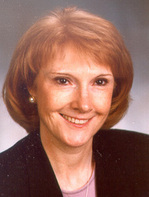 Three University of Minnesota professors have been named Fellows to American Association for the Advancement of Science (AAAS). These professors have been elevated to this rank because of their efforts toward advancing science applications that are deemed scientifically or socially distinguished. Election as a Fellow is an honor bestowed upon AAAS members by their peers. Carol Windels, a professor in the Department of Plant Pathology at the Northwest Research and Outreach Center (NWROC) in Crookston, will be honored as one of the 2010 Fellows and welcomed into the prestigious society at its annual convention in February.
Three University of Minnesota professors have been named Fellows to American Association for the Advancement of Science (AAAS). These professors have been elevated to this rank because of their efforts toward advancing science applications that are deemed scientifically or socially distinguished. Election as a Fellow is an honor bestowed upon AAAS members by their peers. Carol Windels, a professor in the Department of Plant Pathology at the Northwest Research and Outreach Center (NWROC) in Crookston, will be honored as one of the 2010 Fellows and welcomed into the prestigious society at its annual convention in February.Windels was recognized for her definitive research on ecology of soil borne plant pathogens on field crops and integrated control of diseases and for national professional leadership. Windels is one of three from the University of Minnesota to be named a 2010 Fellow. Joining her are Marc A. Hillmyer, a professor in the Department of Chemistry in the Institute of Technology, and David J. Norris, a professor in the Department of Chemical Engineering and Materials Science in the Institute of Technology.
This year 531 members have been awarded this honor by AAAS because of their scientifically or socially distinguished efforts to advance science or its applications. New Fellows will be presented with an official certificate and a gold and blue (representing science and engineering, respectively) rosette pin during the AAAS Fellows Forum from 8 to 10 a.m. Saturday, Feb. 20 at the 2010 AAAS Annual Meeting in San Diego.
This year's AAAS Fellows were announced in the AAAS News & Notes section of the journal Science this month.
The tradition of AAAS Fellows began in 1874. Currently, members can be considered for the rank of Fellow if nominated by the steering groups of the association's 24 sections, or by any three Fellows who are current AAAS members (so long as two of the three sponsors are not affiliated with the nominee's institution), or by the AAAS chief executive officer. Each steering group then reviews the nominations of individuals within its respective section and a final list is forwarded to the AAAS Council, which votes on the aggregate list.
The council is the policymaking body of the association, chaired by the AAAS president, and consisting of the members of the board of directors, the retiring section chairs, delegates from each electorate and each regional division and two delegates from the National Association of Academies of Science.
The NWROC is located 300 miles from the St. Paul Campus and offers unique opportunities for plant pathology research in the agriculturally rich Red River Valley. The Center has a plant pathology research laboratory, greenhouses, controlled environment chambers, and field facilities. To learn more, visit www.nwroc.umn.edu.
Today the University of Minnesota, Crookston delivers more than 25 applied-science undergraduate degree programs and 50 concentrations, including several online degrees, in agriculture; arts, humanities and social sciences; business; math, science and technology; and natural resources. To learn more, visit www.UMCrookston.edu.
Contact: Maureen Aubol, Northwest Research and Outreach Center, 218-281-8602 (aubo0002@umn.edu); Elizabeth Tollefson, assistant director, communications, 218-281-8432 (ltollefs@umn.edu)

